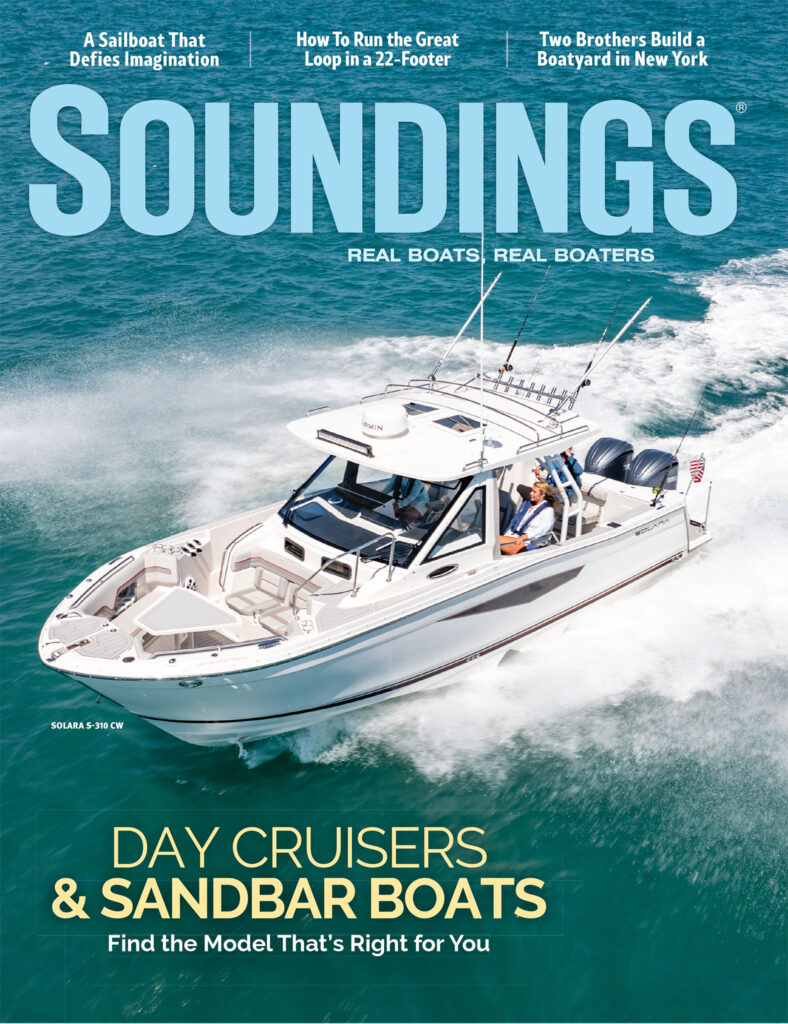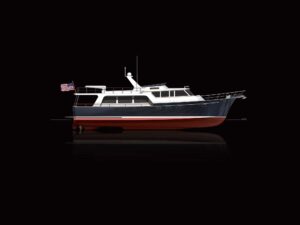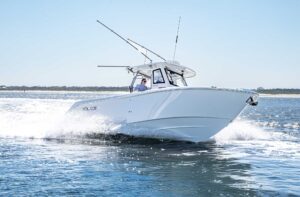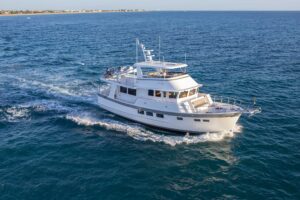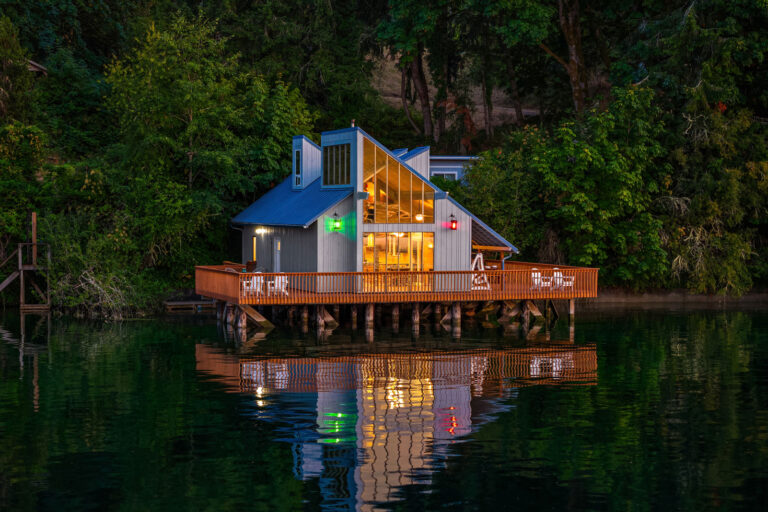Like the minivan, it’s the many functions they offer in a single platform
When I was a wee lad (if only briefly) in the 1960s, we had a Bonneville convertible and a Pontiac station wagon, a sensible car combo for a father who drove to work and a mother who hauled kids around town.

In those days it was one kind of car or the other, although Jeep came out with the Grand Wagoneer, the world’s first SUV, in the late 1960s. An even greater innovation, Lee Iacocca’s minivan, came in the early ’80s, and the first true hybrid vehicle was born — a light truck that rode like a car and a car with the room of a van.
Who knows who came out with the first dual console, but I recall Mako and Grady-White DC models running around Pleasant Bay in the early 1970s. These crossbreeds had an open bow like a cuddy, only without the deck, and a center console’s cockpit back aft. Although they were a bit of an oddball at the time, they soon caught on.
Today, I think the dual console makes more sense for more people who frequent salt water than any other small-boat type. The market seems to agree, with DCs outselling center consoles and small cabin boats by a wide margin. They are doing so for the same reason the minivan made Mr. Iacocca a rich man and Chrysler (at long last) profitable: multifunctionality in a single platform.
More evidence of the dual console’s popularity — in case you don’t subscribe to boat-sales reports — is that more builders are adding them to their stables. Pursuit now has two of them, a 23 and a 26, to go with its center console and express models. Edgewater just introduced a new 28, a kind of hybrid with a twice-stepped deck and an overnighter cabin.
Boston Whaler dropped its old Ventura DC lineup a few years back, which was great news for the competition, but just did an about-face by adding 23- and 27-footers in a new line called Vantage. Scout has long had a five-model DC lineup from 17 to 24 feet, and Sea Hunt, Key West and others have their entries. Grady-White has nine models from 19 to 37 feet.
Why they’re popular

So why consider a dual console? Basically, and of course I’m speaking in generalities here, guys like them because you can fish back aft, and gals like them because, in anything 20 feet and larger, you’ll find an enclosed head opposite the helm. The kids think they’re great because there’s bow seating with a closable windshield between them and their parents, and the boats do a great job pulling skis, boards and tubes.
Unlike many sterndrive bowriders, the dual console has a carpet-free fiberglass deck that drains overboard, which makes it both easier to clean and more seaworthy. It also has outboard power, which, compared with the sterndrive, is lighter, doesn’t eat up cockpit space, is easier to get to for maintenance or replacement, and produces more continuous horsepower at cruise rpm.
Once you’ve decided to consider a dual console, what do you look for? The first thing is the ride. If the boat doesn’t run well in rough water, don’t buy it. You’ll be far more limited as to when you can get out and use the boat if it’s too flat and full forward, so pick one that offers a good ride in a chop. (Many of them do not run well offshore).
A smooth-running boat is not only more comfortable, but it’s also a lot safer for everyone on board, especially the kids up forward. It’s easy to tell whether a boat will run well offshore. A finer entry and more deadrise in the center section of the hull means waves will strike the hull more gradually, which will be felt as a smoother ride. If the chines are wet less than a third of the way aft from the bow at the waterline, I’d be skeptical about the ride.
Practiced sales pitches notwithstanding, transom deadrise alone means nothing whatsoever in terms of ride in any boat running under 40 knots because such a boat does not land on the aft 30 percent of the hull. The fact is, too much deadrise (generally more than 20 degrees) in the stern will make the boat more tender at rest and tend to make it struggle to get on plane below 15 knots. It also usually means more bow rise at hump and more trim when running at speed.
Bow rise at the hump — the transition to plane — decreases visibility over the bow, which is inviting trouble, while absorbing more horsepower to get on top. More bow rise, or trim, at speed means a harder-riding boat, deadrise notwithstanding, because of the angle of incidence of wave impact with the hull. That’s part of the reason a planing hull runs more smoothly when you drop the tabs or tuck the drive in. The other part is that you’re presenting more deadrise forward in the bow to the waves, but I digress.
Consider the unsinkable
I would definitely look for an unsinkable boat, which means the bilge is mostly pumped full of foam. Foam adds positive buoyancy in the event the hull is breached, it acts as a membrane to help prevent water intrusion through a breach, and it makes the boat quieter at speed, absorbing wave noise. Why buy a boat that is guaranteed to sink like a stone if you punch a hole in the bottom or a through-hull fitting lets go?
More freeboard forward means the hull will be better at keeping the ocean out of the boat, and the interior cockpit coaming, or freeboard inside, will be higher, so people will be down in the boat rather than up on top of it. The most dangerous place to be on a boat when it’s under way is in the bow because the motions are accentuated, and an ejection over the bow carries the danger of impact with the propeller. So a smoother-riding hull with a deeper forward cockpit and longer rails within easy reach matter a lot in any family boat.
I would avoid a boat that’s bright white on the inside simply because your eyes will be under the strain of glare in bright sunlight, and there will be more windshield reflections at night, which can affect your ability to see unlit objects close aboard. Look for a boarding ladder that’s easy to open by someone in the water or from the boat. A retractable bass boat ladder is silly for a multifunction dual console; it was originally designed as an emergency ladder for guys fishing solo. In fact, you can easily fall off the stern trying to extract the thing.
Also, avoid boats that only come with detachable ladders because they are useless for someone already in the water, and in any event they are cumbersome and impractical for most people. If the boat has a head, be sure you can get in and out comfortably. The windshield should be high enough so you’re looking through glass and not at the frame when seated. The battery switch and through-hull seacocks should be conveniently located, as should shore-power connectors on larger boats.
See related articles:
April 2013 issue

